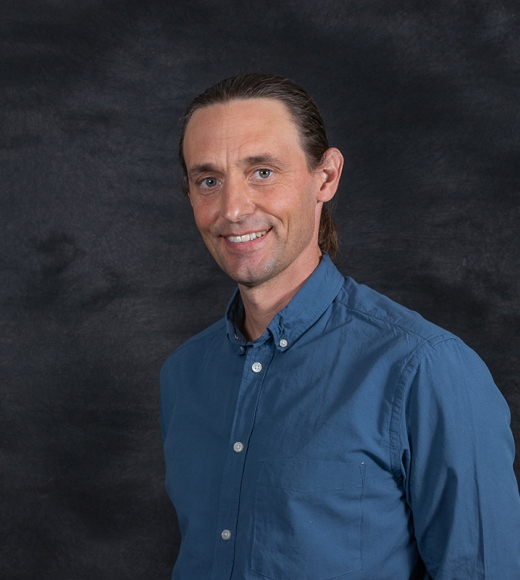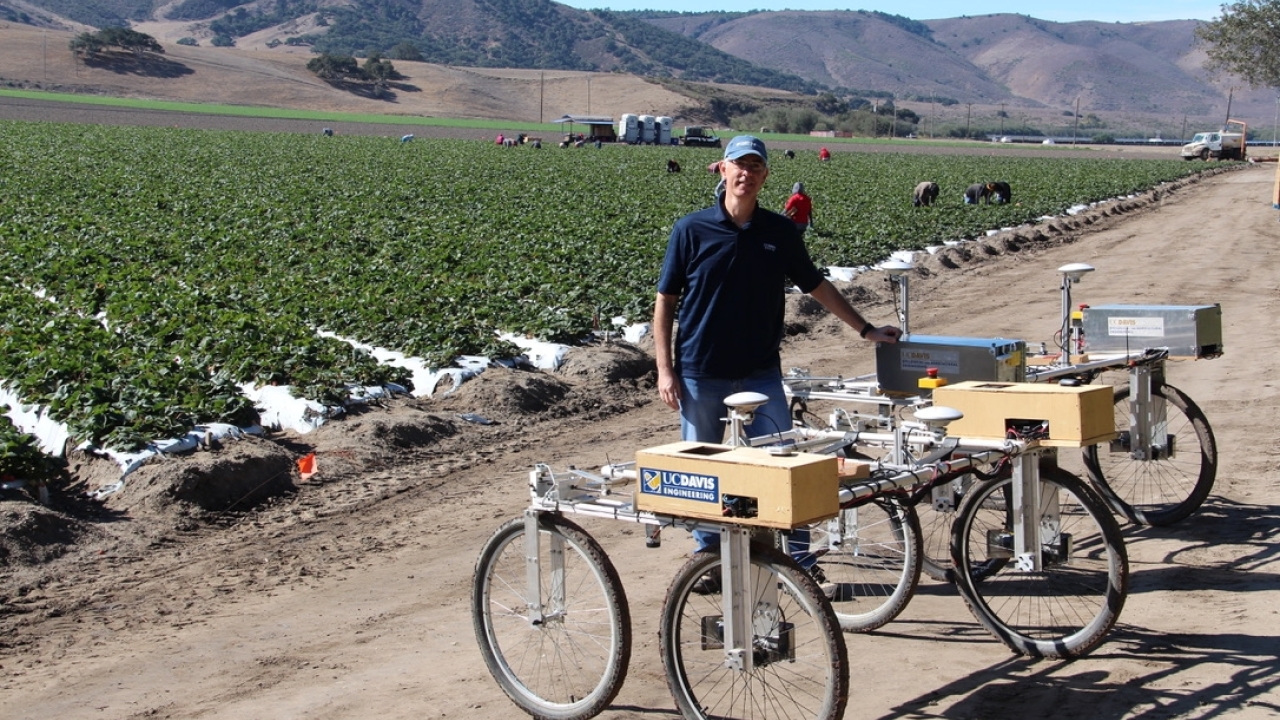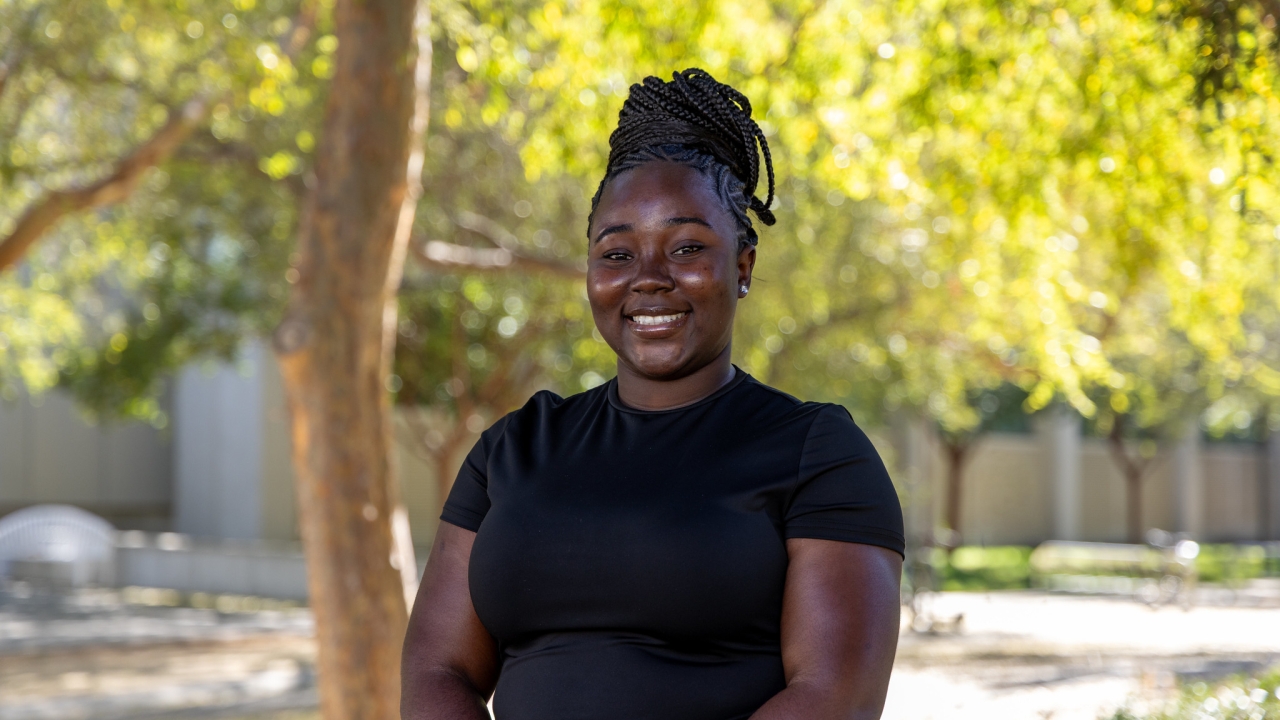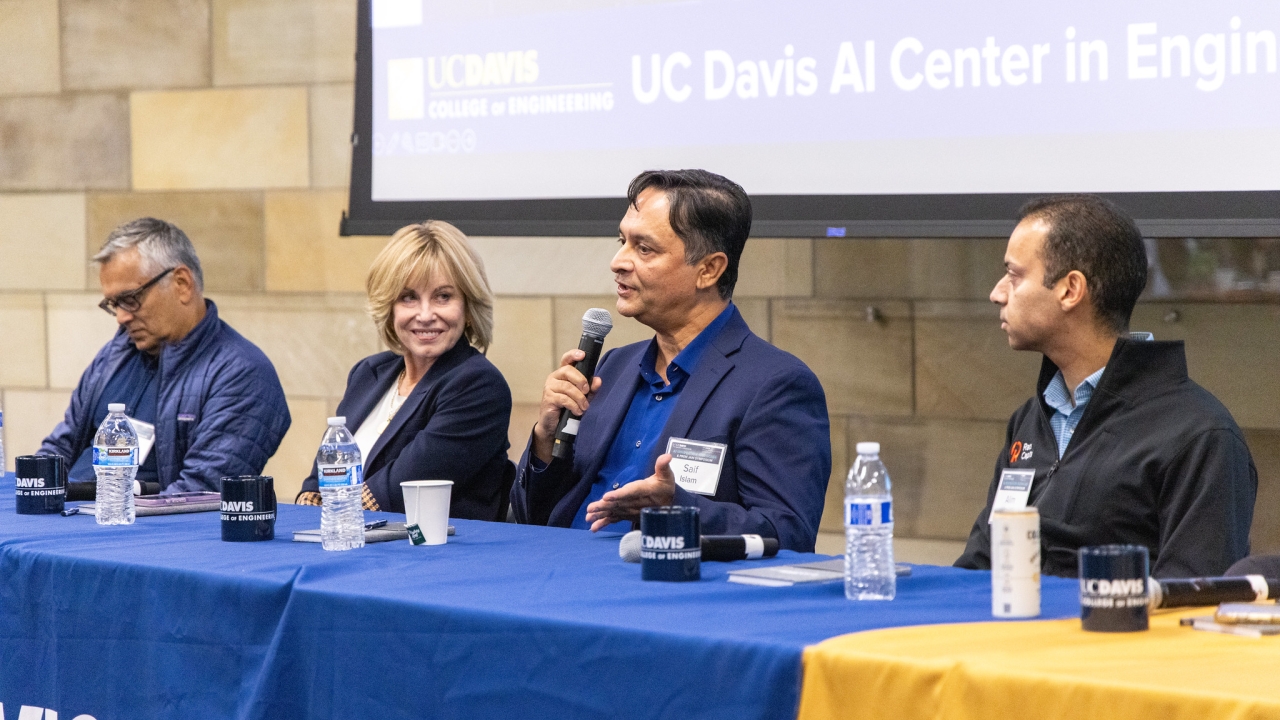
UC Davis Engineers Make Breakthrough in Polymer Patterning
Engineering researchers at the University of California, Davis, have developed a novel method enabling high-resolution optical patterning of semiconducting polymers. Using existing photolithography technology, the technique paves the way for new applications in flexible electronics without requiring expensive new infrastructure.

A crucial step in building electronic microchips, patterning creates the pathways and placement of transistors and other components onto the microchip. Methods and tools to pattern hard semiconductors like silicon wafers for this purpose are ubiquitous, with photolithography, a technique that involves transferring a pattern from a photomask onto the wafer, being the most popular.
Semiconducting polymers, or SPs, however, are notoriously difficult to pattern. Polymers are processed as fluids using solvents, limiting the patterning feature size to the droplet size. Even with the smallest needle, the smallest droplets are 50 micrometers across using fluid processing. While 50 micrometers across is quite small (about the size of a human skin cell or large dust particle), elements for optoelectronic microcircuits need to be much smaller.
"We're talking about things that are 100 or even 1,000 times smaller," said Adam Moulé, professor of chemical engineering at UC Davis and lead investigator on the project. "If we want to make electronics with polymers, we need to pattern better than you can do with a solvent solution."
Additionally, the current infrastructure is built for patterning hard semiconducting materials like silicon. While SPs are promising alternatives to silicon in such areas as mechanical flexibility (think: foldable electronics and wearables) and environmental friendliness, the absence of dedicated tools creates a barrier to their industrial development.
Paving a Pathway to Polymer Patterning
Moulé and his team of researchers have developed a potential solution. Their paper, "Advancing Semiconducting Polymer Patterning: Analysis and Predictive Modeling of Micropatterns Achieved via Photothermal Lithography," recently published in ACS Applied Polymer Materials, describes how they adapted an existing photolithography tool, the Alvéole ́PRIMO, to perform a technique called projection photothermal lithography on polymers.

Projection photothermal lithography uses a laser beam to form a high-resolution pattern by heating specific areas of a material to cause local etching into a solvent. The films remain below 80 degrees Celsius throughout the process, so there's no risk of damaging the material; this system would also enable polymer recovery for greener processing.
First, an SP film is exposed to a mixture of solvents that will keep it solid at room temperature and will dissolve with heat exposure. A laser is then shined on the SP film, which absorbs the light and heats up. When the temperature reaches a certain threshold, the SP dissolves into the solvent mixture, but only where the laser light heats it.
The dissolution creates a negative pattern in the film, with the unexposed parts of the SP film remaining solid. The result is like a topographical map, with each etch depth defined by a slightly higher local intensity. Since the polymer absorbs light efficiently and transports heat inefficiently, the patterned film has nearly the same resolution as the light pattern.
Where Science and Art Collide
The team demonstrated the technique's effectiveness by patterning an intricate piece of artwork created by Shiva Ahmadi, professor of art and art history at UC Davis. The area onto which the image was projected was less than 0.1 millimeters, smaller than most grains of sand.
Moulé had originally proposed using UC Davis' popular cow on a bicycle illustration after running into copyright issues with Johannes Vermeer's Girl with a Pearl Earring, but it was vetoed by his team because, according to him, they wanted a classy image that captured the imagination.


Ahmadi was one of two professors in the art department who responded to Moulé's cold emails in search of a design he described as "upscale art."
"Her work had all these curves and animals and shapes, and she came up with this piece with an elephant and a snake," he said. "Meghna Jha, one of my Ph.D. students on this project, was like, 'That's the one.'"
A Plethora of Possibilities
Using a commercially available tool to pattern SPs opens up possibilities for industrializing polymer patterning without creating new infrastructure. Not only were the researchers able to show that using the Alvéole PRIMO was successful, but they also created a predictive model to show that the patterning technique can be applied to a variety of polymer semiconductors.
The predictive model analyzes how the SPs dissolve when heated by a laser in a mixture of solvents. With both types of SPs that were tested, the model was able to predict how the heat from the laser spreads through polymer film and how quickly it dissolves.
Whereas typically a lithography instrument designed for silicon can only be used on pure silicon wafers, the model reveals that researchers can use that same instrument to pattern polymers.
Moulé is interested in using this process for making light photodetectors to use in the medical field. Perhaps the material could be patterned in such a way that it can detect polarized light or filter out absorbances except for one wavelength. It's like when you shine a flashlight on your hand, says Moulé, and it glows red.
"Light is getting through, but it looks red because you only have one detector in your eyes at the right length," he said. "If you had eight red detectors, you could see differences in the light coming through, like the shadow from your bones. Or if you had a photodetector that could detect polarized light, you could see 3D information about the soft structures in your hand."
For now, Moulé and his team are working out how to build the software and hardware for other researchers to connect to tools in their clean rooms to experiment with other polymers and solvents. The potential applications in organic electronics, he says, are endless.
"People are going to be able to pattern their devices for sensors, photovoltaics, transistors, using different substrates, different geometries. Everybody I have talked to about this so far has had a different reason to want something like this. It's dizzying."
Media Resources
- Jessica Heath, (530) 760-9682, jesheath@ucdavis.edu
- Adam Moulé, amoule@ucdavis.edu





